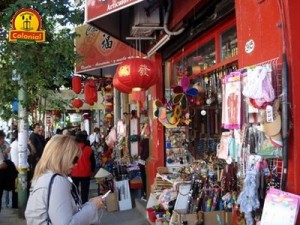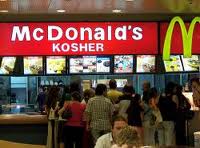With a thriving population of almost 13 million people, Buenos Aires is the eighth most densely populated city in the world. The constant flow of immigrants has created the ever-changing, vibrant, and one of a kind flavor and personality, that we call Buenos Aires. The people of Buenos Aires call themselves Porteños, which literally means people of a port city. Buenos Aires is made up of almost 50 different neighborhoods, each with its own vibe. But on the surface the streets of Buenos Aires may give off a sense of Roma and Barcelona mixed together. And it’s true, the hand gestures, hair, and sounds of most people, do stem from both Italy and Spain (Where most people in Buenos Aires descend from).
After Argentina’s independence from Spain, many Italians and Spanish came to Argentina in hopes of a new and better life. And due to Argentina’s open immigration policy during this time, people from France, Germany, Ireland, Croatia, Ukraine, and Poland, among many others, flocked to the city as well. Today, around 90% of Argentines come from European descent. A large number of Portenos of Arab and Jewish descent live in the city also and people from neighboring countries, like Bolivia, Paraguay and Peru have established important communities in the city, too. The Argentine national identity is strong, but if you look deeper, the identity itself is formed by a colorful and delicious cultural melting pot.
The cuisine in Buenos Aires is mostly a rich mix of European and American Indigenous cuisine. Empanadas (stuffed pastry), locro (a stew, which commonly includes corn, beans, meat, onion, gourd), and yerba mate, staples to the average porteno (person from Buenos Aires) diet, rep the strong indigenous American history. Pasta and pizza, other major aspects of the porteno cuisine, come from Italy, while famed choripan (chorizo sausage in a bun), stems from the German bratwurst. To many palates, these dishes may lack in spice, but this is promptly solved in Mexican Restaurants and in the markets of Chinatown.
Relatively new to the vibrant Buenos Aires scene, but nonetheless adored, is Chinatown. Offering new flavors and much needed spice to the city, on the weekends Chinatown is swamped by expats, tourists, and locals alike. Although Chinese immigration really only began to take off in the 1980s, today, not only does Buenos Aires have Asian restaurants, schools, markets, variety shops, and temples, but one can also find alternative medical treatments acupuncturists and Chinese remedies at the neighborhood herbalists. A growing number of Chinese students are studying abroad in Buenos Aires as well, learning the language and exploring the rich culture of the city. Buenos Aires also celebrates the Chinese New year with a fantastic festival, filled with Chinese performances, art, and food.

Although the Black population declined drastically in the 19th century, due to high mortality rates in the Wars of Independence and the Paraguayan war cholera and yellow fever epidemics, and low rates of marriage among blacks (many black owmen married European immigrants in the 19th century), now, there is a growing Afro-Argentine community in Buenos Aires, specifically in San Telmo, contributing to the eclectic art and music flavor throughout the city.
The Jewish community in Buenos Aires is another important part of the city, which mainly resides in the Once and Abasto districts. Today Argentina is home to around 250,000 Jews, making it the sixth largest Jewish community in the world, and the biggest in Latin America. The number of Jewish inhabitants in Buenos Aires is equal to the Jewish populations of Brazil, Chile, Mexico and Uruguay combined. The only kosher McDonalds outside of Isreal can be found in the Abasto shopping mall, where religious jews wait in line after Shabbat on Saturday evenings to indulge in the delicious burgers and fries. However, most Jews in Buenos Aires have neverbelonged to a jewish organization and are completely assimilated into Argentine society. These secular Jews embrace Jewish culture and traditions, including the literature, food, and music, but do not practice Judaism as a religion.
All of these cultural influences have meshed together and created a city that is one of a kind and inarguably one of the most fantastic
destinations in the world.

